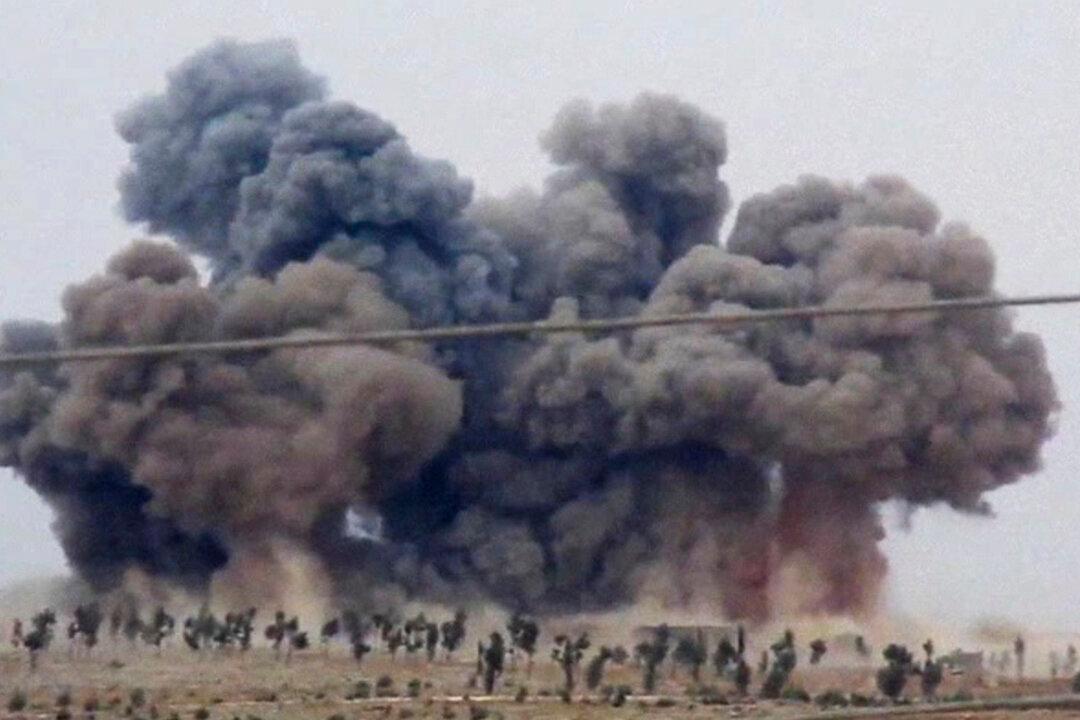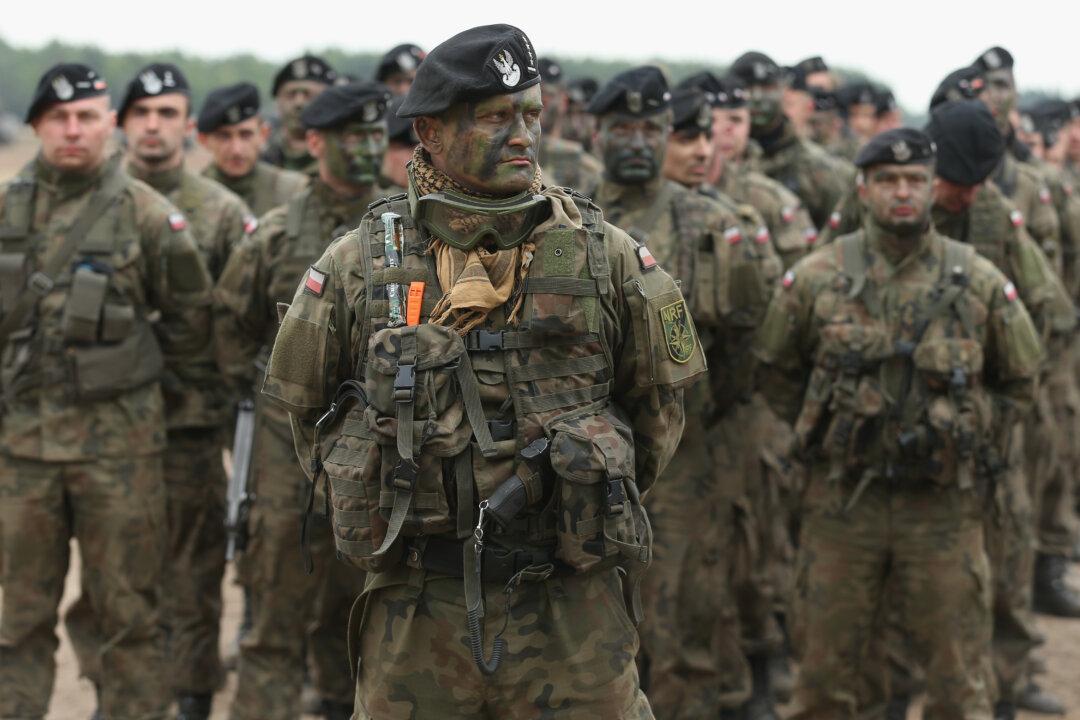Washington greeted reports of the Russian air force’s first wave of airstrikes on Sept. 30 with fierce rhetoric. Moscow, said Defense Secretary Ash Carter, was “pouring gasoline on the fire“ in Syria.
The strikes reportedly hit rebels fighting pro-government forces in various towns including Hama, Homs, and Jisr al-Shughour in the west of the country, a long way from areas further east where Islamic State holds sway. Kremlin spokesmen claimed that their airstrikes attacked 12 ISIS targets—but this has been disputed by people on the ground in Syria who posted video of the explosions on social media.
Russia’s decision to join the bombing party in Syria follows a summer of fruitless and inconsequential diplomacy and raises important questions about who is bombing who and what these campaigns aim to achieve.
[aolvideo src=“http://pshared.5min.com/Scripts/PlayerSeed.js?sid=1759&width=580&height=356&playList=519123263&responsive=false&pgType=console&pgTypeId=discovery-videoDetails-grabCodeBtn”]
At the beginning of the war, the Syrian Arab Air Force (SyAAF) was able to use its overwhelming air superiority to bomb rebel positions but developments have affected the Syrian military’s air status and have made the Russian intervention much more important for the Assad regime.
Firstly, parts of the war have moved into major urban areas where air superiority is of less tactical use, though the use of barrel bombs from Syrian helicopters still regularly makes the news. Secondly, many Syrian airbases, for both fighter planes and helicopters have been captured and destroyed, which has had a major impact on the ability of Assad forces to hold territory.
Prior to the capture or destruction of air bases in Syria, the SyAAF was flying MiG-21s, MiG-23BNs, Su-22s, and a few Su-24s, all fighter and bomber aircraft that are used by most other Arab countries not under the patronage of U.S. defense assistance.
The United States and its allies in the region began to target ISIS positions in Syria in August 2014, following a similar pattern used in Iraq. With the United States over Syria are six other countries: Bahrain, Jordan, Qatar, Saudi Arabia, United Arab Emirates—and the United Kingdom. Other countries, such as Turkey and France, are also targeting ISIS from outside the official coalition and others such as The Netherlands and Australia have limited their operations to Iraq.
The U.S.-led coalition has refrained from directly targeting Syrian pro-government forces while primarily defending Kurdish positions and attacking supply lines. In addition to traditional air forces, the United States, U.K. and many others are using drones over Syria as have the Iranians, and more recently—according to some reports—ISIS itself.
With the U.S.-led intervention, it could be taken that as well as the Kurdish forces, moderate rebel forces, such as the Free Syrian Army, also had air support while the SyAAF continued to experience a decline in numbers and operational opportunities.
The Russian Air Force has third-class fighter aircraft such as SU-24 over Syria and their operational role will be to destroy supply lines, target headquarters, and harass back lines all in an effort to help the pro-government forces to hold and take new territory. Russia has also sent in specialist forces to defend air bases.
Strange Bedfellows
With so many actors in Syria, such as the Iranians, Turks, U.S.-led coalition, and now the Russians, there is the question of communication. In December 2014, Iraqi Shia forces released information which suggested that the United States and Iran were talking to one another about how to organize and respond to ISIS threats to Baghdad and other Iraqi cities. The Iranians were eager to let the world know that the United States had to speak to them to coordinate forces on the ground while the United States was less keen to jeopardize the assistance given to it by its Arab allies.
For Iran, the Russian intervention is a very welcome sight not only because of a long-term alliance since the Islamic Republic was founded. Iran is widely reported to have been preparing a ground offensive with Hezbollah troops so Russian air support would greatly assist in this.
If it is indeed already coordinating with the Iranians in Iraq, it makes sense for the United States and Russia to enhance their defense communication in Syria. Having agreed that they would establish a communication channel with Moscow, the U.S. Central Command expressed shock at the lack of communication by the Russians prior to its first airstrike—they were given an hour’s warning. But communication between the United States and Russia had already improved during the Ukraine conflict. The effort to go a step further over Syria makes sense—but perhaps not for the reasons that many would expect: friendly fire.
Accidents May Happen
The likelihood that Russian and U.S. or other coalition air forces would share the same airspace is at this point minimal. Russia has already mounted two days of airstrikes against forces other than ISIS in Syria, though these jihadi groups are no less dangerous for Assad or threatening to Russian national security. However, if Russia moves towards more airstrikes against ISIS, it is more likely to share the skies with coalition forces.
Unplanned air-to-air attacks are very unlikely because there are no opposing air forces in Syria—and, despite saying it sees the Assad regime as part of the problem rather than as a solution, the United States has not taken any military action against government forces. But there is a greater concern that, in an uncoordinated airspace with ten or more national air forces flying sorties—including fighters and UAVs—there is a risk of mid-air collisions. Such an accident would not cause a military risk but would put severe diplomatic pressure on the governments at home.
Finally, we have to consider the standard operating procedures if a Russian, American, or any other pilot were to be shot down, as we saw when a Jordanian pilot was shot down and captured by ISIS. He was horrifically burned to death in a cage. As this atrocity dramatically illustrates, all those fighting Islamic State in Syria and Iraq would benefit from a normalized route of communication between militaries that would allow governments to respond quickly to rescue or recover their personnel.
David J. Galbreath is a professor of international security and director of the Center for War and Technology at the University of Bath, U.K. This article was previously published on TheConversation.com

